Description
Zingiber zerumbet, ‘Awapuhi or Shampoo Ginger, is a perennial multipurpose herbaceous plant. The shoots, rhizomes and inflorescence liquid are all consumable. The rhizome has traditionally been used in medicinal applications as an anti-inflammatory, anti-diarrheal, de-wormer, and for various types of pain management. The liquid from the inflorescence is drinkable. Perhaps the most well known use for ‘awapuhi is the inflorescence liquid as shampoo or conditioner for the hair and skin, as it provides a soothing, shiny and smoothing effect. This ginger relative grows to heights of about two to four feet. Like some other gingers, ‘awapuhi dies back annually to store its energy in its roots/rhizomes. From these rhizomes, the plant re-sprouts in spring, when the weather is ideal for them. ‘Awaphui can form dense thickets, so allow them to have a lot of space, or plan to manage them annually. Despite its tendency to spread, it has not been included on any invasive species lists and has been on the islands for over 1,000 years (i.e.: it’s generally not a problematic plant).
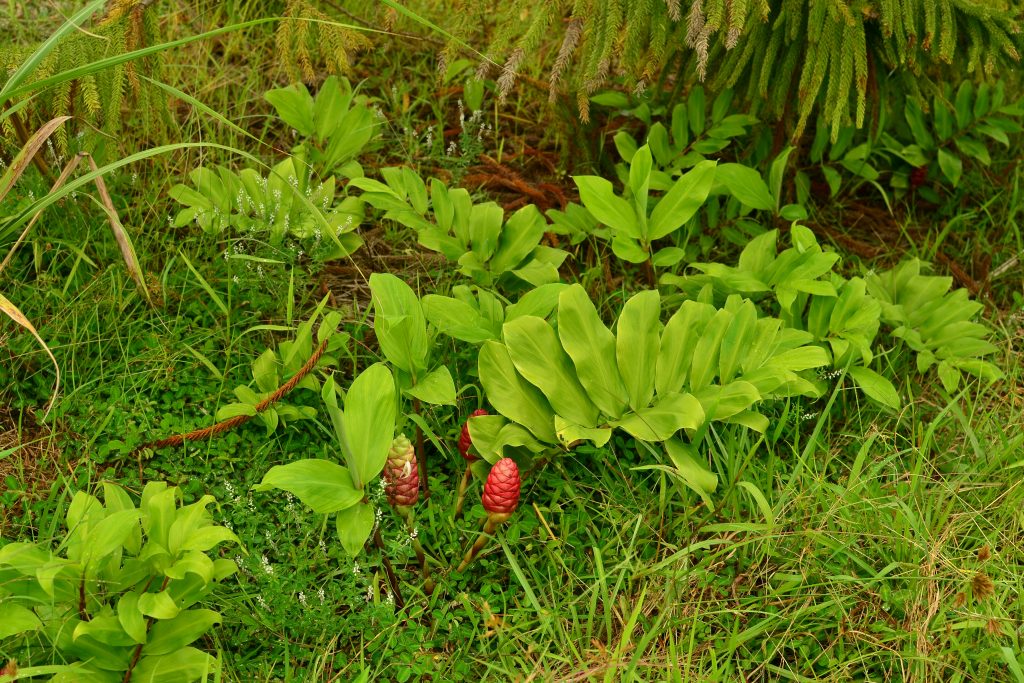
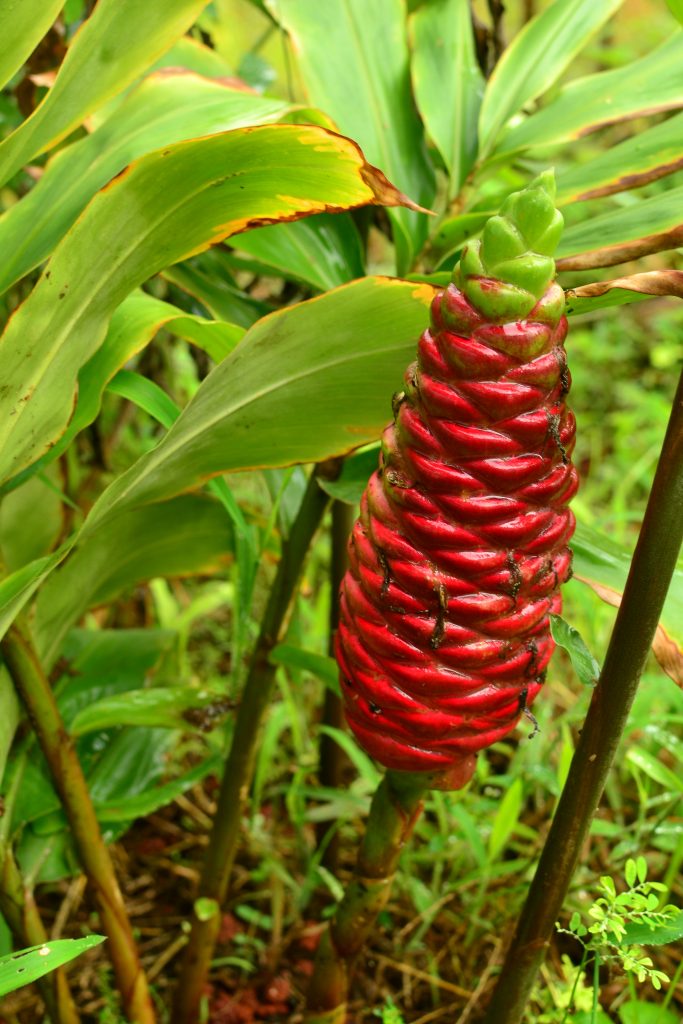
To utilize the liquid from the inflorescence: use a cup or jar and hand-squeeze the inflorescence until the juice comes out. Milking may be done repeatedly if left on the plant. If using as shampoo, you may or may not decide to rinse out the liquid dependent upon your desires.
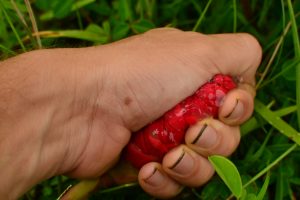
Hand squeeze to milk inflorescence
Propagation
‘Awapuhi does not produce seed and is only propagated by division. Dig up rhizomes when dormant; divide and replant for plant replication in a separate area. Rhizomes spread on their own naturally.
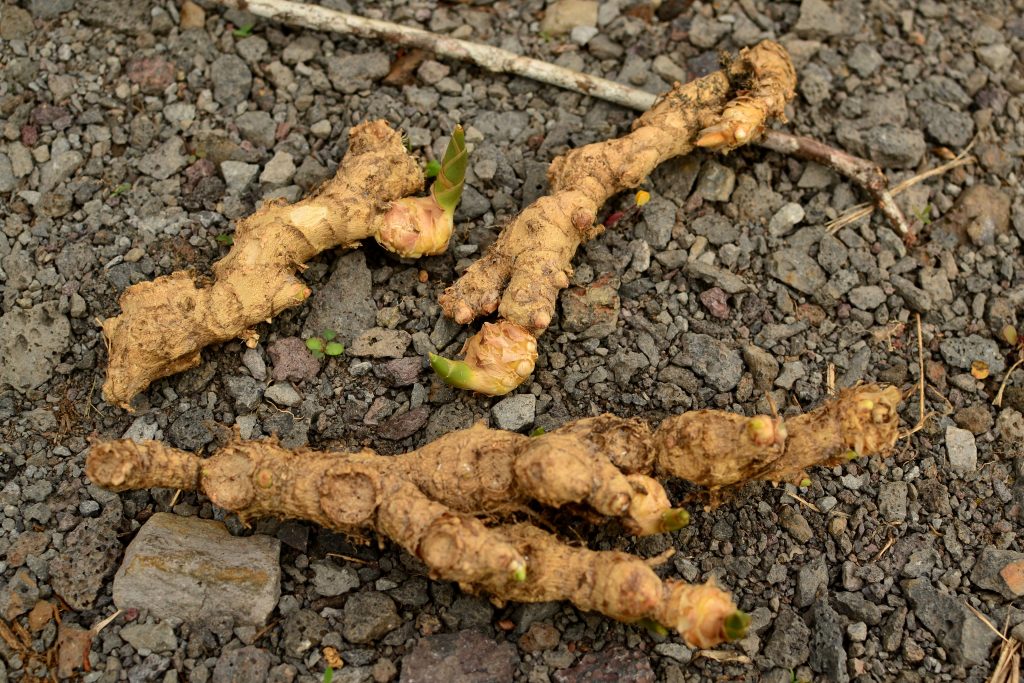
Rhizomes sprouting
Care
This plant is very carefree. Plant it, let it grow and watch the flowers emerge. This plant will thrive in heavy shade and waterlogged soils. In other words, it can be planted in places where most plants will not live.
Eating
Shoots are spicy and consist of the still folded leaves as they emerge. Mature rhizomes are intensely bitter; young rhizomes are not as powerful.
Where to obtain planting materials
Ask a friend growing the plant for some rhizomes! I’ve seen this plant for sale at local nurseries, too. ‘Awapuhi is pretty easy to find, as it was a canoe plant, an ancient Polynesian introduction into Hawaii.
My Garden
When I first started my garden, I was really interested in finding all the Polynesian canoe plants. It took me awhile before I found my first ‘awapuhi plant. But finally, I got a small bit of rhizome from a neighbor that slowly established itself. A few months later, another friend gave me a bunch of his harvested “edible ginger” (Zingiber officinale). I went to eat some of the ginger and it was so intense! I used too much of it and made my meal unpalatable. For a few months, I was confused about that whole situation until I allowed some of the rhizomes he gave me to grow out. As soon as the flower came out, I knew what had happened! I accidently ate ‘awapuhi! At least I obtained some amazing medicinal benefits from that experience. Two years later, I was able to dig up that original clump and spread it around to create many more plants, some of which I planted in a waterway where not many other plants want to grow. Now I get it watch it thrive and utilize the many flowers it creates!!
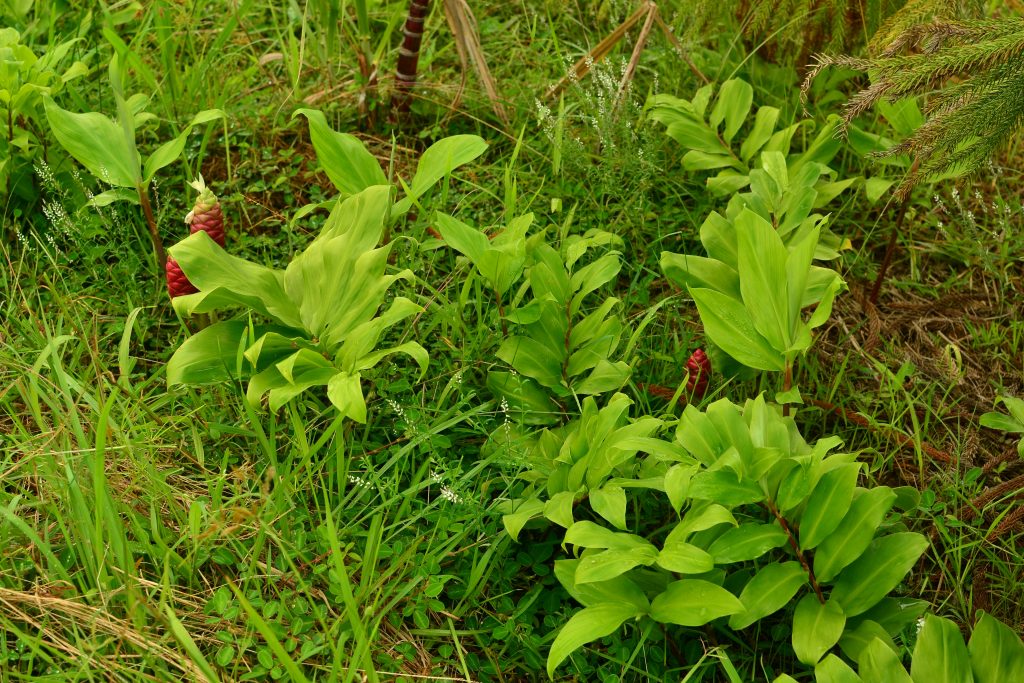
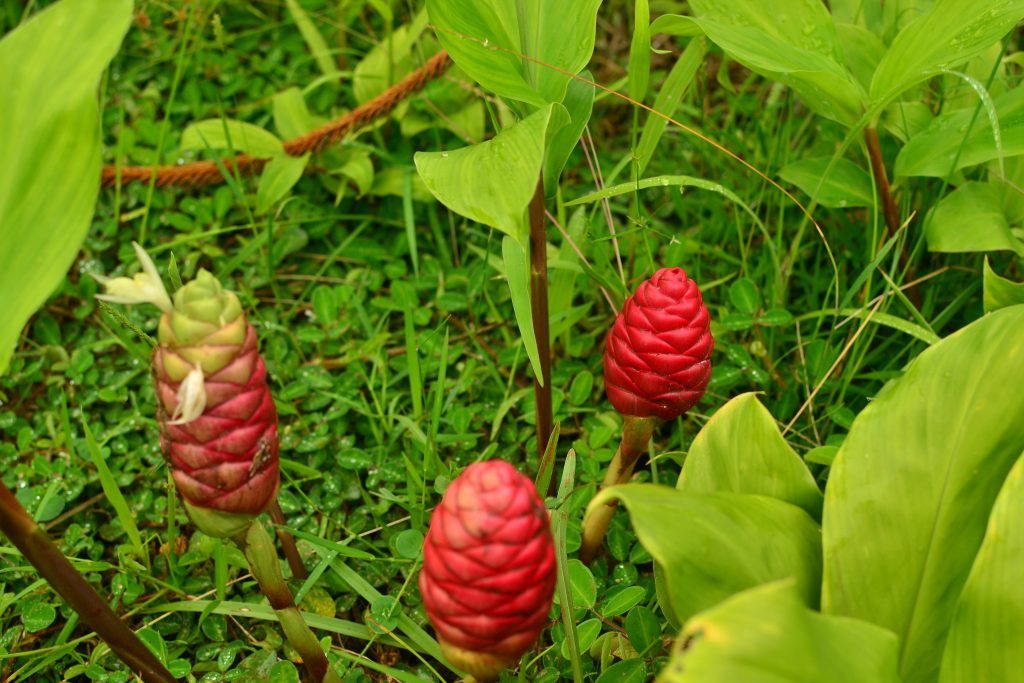
Happy Gardening!